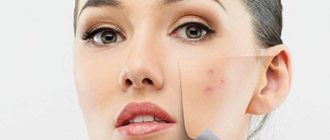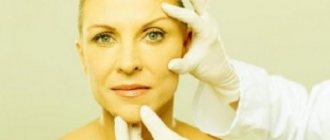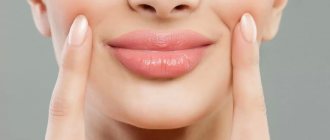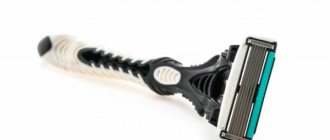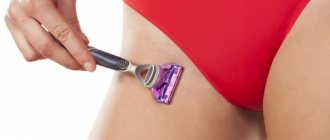These blackheads may coalesce and form cavities containing pus (abscesses). Once resolved, they leave rough scars.
This problem usually bothers and affects adult men; it is less common in women.
Acne affects such areas of the body as the face, chest, and back. Often a type of conglobate form of acne appears - one or multiple compacted acne. The rashes are bluish-red in color, very dense and painful. There are often pustules on the surface.
Causes of the disease
When acne occurs, hereditary predisposition plays an important role. In addition to genetic factors, the following factors are noted for the appearance of conglobate acne and the development of the inflammatory process:
- suffered stress;
- depressed mental state;
- hormonal disorders;
- chronic infectious diseases and so-called foci of focal infection (hidden sinusitis, sinusitis, tooth root cysts, etc.).
To understand how to deal with inflammation, it is necessary to take into account all these factors, which will help prescribe the right treatment to eliminate conglobate acne.
Clinical manifestations of conglobate acne
Some studies show that this type of acne* is more common in men with an extra Y chromosome. Globular acne is characterized by the gradual appearance of many nodular-cystic formations communicating with each other, as well as the appearance of groups of comedones.48
Most often, the location of this type of acne is the back of the neck, chest, shoulders, back, perineum, buttocks, and armpits. Sometimes the rash appears on the face. Also, conglobate acne* on the body can manifest itself in the following:
- abundant accumulations of large comedones the size of lentils, sometimes double;
- when squeezing out acne formations, deep holes remain;
- after self-resolving acne, saucer-shaped shiny impressions may appear;
- suppuration (deep and superficial), sometimes with abscesses;
- fistulas.
Thick greenish pus accumulates inside the acne formations; when discharged, it has an unpleasant odor. Conglobate acne heals slowly; when resolved, atrophic scars often form, less often keloid or hypertrophic scars.48
Not many people know how dangerous acne* can be. During periods of exacerbation, pain and fever may occur.48 When conducting blood tests, hyperproteinemia, hyperglobulinemia, and polynucleosis may be detected. Acne conglobata is characterized by frequent relapses. Typically, by age 30, the disease subsides.48
Diagnosis of conglobate acne
To make a primary diagnosis, a dermatologist needs only a visual examination, since acne conglobata has a characteristic appearance. After this, the patient is prescribed a series of tests to identify the characteristics of the disease, its causes and select adequate treatment. The main diagnostic procedures include:
- general and biochemical blood test;
- immunogram;
- hormone analysis.
The patient may also be referred for consultation to related specialists: gynecologist, endocrinologist, gastroenterologist and otolaryngologist.
Treatment
When treating spherical acne, both topical (local) and systemic treatment are used.
Self-medication is dangerous with complications!
Attention
Despite the fact that our articles are based on trusted sources and have been tested by practicing doctors, the same symptoms can be signs of different diseases, and the disease may not proceed according to the textbook.
Pros of seeing a doctor:
- Only a specialist will prescribe suitable medications.
- Recovery will be easier and faster.
- The doctor will monitor the course of the disease and help avoid complications.
find a doctor
Do not try to treat yourself - consult a specialist.
Systemic treatment consists of the use of the following medications:
- antibiotics (most often they use tetracycline and other drugs according to schemes, intravenously and intramuscularly);
- retinoids (used after antibiotic therapy for a course of 3 to 6 months);
- hormonal medications (prescribed to women in cases where the cause of conglobate acne is a hormonal imbalance);
- combined oral contraceptives;
- vitamin complexes;
- immunomodulators.
Acne facial cleansing
Facial cleansing is a special procedure, the purpose of which is to cleanse the skin of various purulent formations.
Topical medications include: ointments, gels, emulsions with antibiotics, as well as retinoids in the form of ointments, gels or creams.
Non-drug treatment (physiotherapy) is very popular today, including:
- light or laser therapy (destroys protoporphyrins and other anaerobic microorganisms);
- zinc electrophoresis or iodine electrophoresis;
- applications (mud or paraffin);
- darsonvalization (the procedure reduces the amount of sebum secretion, reduces the number of bacteria, restores tissue nutrition, relieves swelling);
- chemical peeling (this procedure helps stimulate the synthesis of fibrillar protein and elastin);
- cryotherapy (indicated for scars).
Only a specialist can select a treatment regimen, taking into account many important and serious factors (the patient’s age, individual indications and contraindications, financial capabilities).
Can conglobate acne be cured?
To the question “How to treat conglobate acne?” Doctors answer unequivocally: taking antibiotics internally and externally. In extremely severe cases, aromatic retinoids are prescribed to normalize sebum secretion from the skin glands. At the final stages, cosmetic procedures are recommended.
In addition, for successful treatment of conglobate acne, it is necessary first of all to relieve the patient of stress and a depressed mental state, often associated with the disease itself. In these cases, a dermatologist cannot do without the help of a psychotherapist or medical psychologist. It is also important to identify possible endocrinological diseases - for this purpose it is worth visiting a consultation with an endocrinologist.
What types of acne* are there?
In addition to the severe conglobate form, there are other types of acne* that are observed in patients of different ages97:
- Microcomedones. They are the precursors of comedones and are almost impossible to detect with the naked eye.
- Whiteheads. Closed comedones with a diameter of up to 3 mm. The outlet of a pimple* is difficult to detect, but the ducts of the sebaceous glands are filled with compact material. Such rashes can resolve spontaneously or degenerate into inflammatory elements.
- Open comedones. Appearing from whiteheads, the black tip is the result of the oxidation of tyrosine, which is part of the sebaceous contents, and the formation of melanin.
- Microcysts. These are whiteheads that usually appear over the joints and in the lateral cheek area. They cause aesthetic discomfort to the patient and can become inflamed.
In addition to these types of acne*, there are others that relate to the inflammatory manifestations of acne:
- Papules. Inflammatory elements that have an elastic consistency. They develop quite quickly and after resolution they leave hyperpigmented spots.
- Pustules. Bluish-red nodules with a pustule in the center, which arise independently or develop from papules. After the pustules resolve, noticeable pigmentation remains.
- Indurative acne. They usually develop from pustular acne and have a dense consistency. They develop over 3-4 weeks and may abscess or resolve, leaving behind atrophic scars.
- Abscess acne. Sharply painful formations of bright red color that arise from indurative acne or develop primarily. After resolution, scars remain in their place.
There are also phlegmonous acne, which have a diameter of more than 10 mm and a soft consistency. They develop within 3-4 weeks. After their resolution, keloid scars often remain.
How effective are different treatments?
Taking into account all the specifics of the disease, every year different specialists offer different ways to solve this problem. For example, in 2011, the European Dermatology Forum proposed new treatment methods. All means were sorted by judges in the following order of effectiveness:
- High. The drugs were taken orally at 0.5 mg per kilogram. The active substance was isotretinoin;
- Moderate. Complex therapy. The patient took the drug (the active ingredient was azelaic acid), in parallel with antibiotics;
- Low. Antibiotics are taken together with one of the medications;
- Unclear. This category includes the following techniques (laser correction and Intense Pulsed Light).
If you have at least one of the symptoms of acne conglobata, you should never sunbathe. Therapy should include treatment with antibiotics, antiandrogens, therapeutic light, and external treatment.
Pathophysiology
Acne conglobata manifests itself as deeply burrowing abscesses that are connected to each other through the sinus passages. Initially, the nodular lesion may mimic a pimple, but underneath there is a strong inflammatory reaction and the formation of pus. Over time, the pus penetrates the adjacent tissues and comes to the surface of the skin. Scarring and body disfigurement are common with this type of acne. Comedones often occur in groups of three, and cysts often contain foul-smelling, pus-filled material that oozes to the surface of the skin.
Removing the effects of acne
Unfortunately, the appearance of scars with conglobate acne cannot be avoided even with timely treatment. Today, there are many methods that allow you to lift sunken areas and polish protruding scar elements to the same level as the skin. Dermabrasion, acid peels, laser resurfacing are just a few methods that allow you to correct skin defects.
Subsequent prevention
After getting rid of multiple conglobate acne, the following preventive measures are recommended to avoid relapse of the disease, namely:
- Wash your face every morning and evening with warm water using antibacterial or tar soap;
- promptly treat chronic diseases of an infectious nature;
- pay special attention to dental health, since their damage leads to the constant growth of bacterial microflora;
- balance your diet by saturating your diet with fresh fruits, vegetables and dairy products;
- give up bad habits such as drinking alcohol, smoking and drug addiction.
It is also extremely important to monitor the health of your skin and, when the first multiple formations appear that have all the signs of conglobate acne, immediately seek help from a dermatologist. Timely drug therapy will quickly restore the health of epithelial tissues and prevent severe complications with the formation of keloid scars.
Nutrition for problem skin
Proper nutrition is the basis of health. If you consume healthy foods filled with vitamins and minerals, your body will thank you for clean and healthy skin, beautiful hair and strong nails.
Why can our articles be trusted?
We make health information clear, accessible and relevant.
- All articles are checked by practicing doctors.
- We take scientific literature and the latest research as a basis.
- We publish detailed articles that answer all questions.
For many diseases, proper nutrition is the best preventive measure, and the relationship between the gastrointestinal tract and the condition of facial skin is a long-proven fact.
Acne diet
A person's appearance largely depends on what he eats.
Therefore, in order to have clean and blemish-free skin, it is important to remember the principles of nutrition:
- include foods rich in vitamins A, E and B in your diet (vitamin A contains: carrots, red peppers, persimmons, apricots, cottage cheese; vitamin E: banana, oatmeal, beef, buckwheat; vitamin B: potatoes, cereals, meat, fish , eggs, milk, etc.);
- eat foods containing zinc: herring, veal liver and oysters;
- fish at least once a week (or buy red fat at the pharmacy).
If you have problem skin, you should avoid the following foods: sweets, flour products, fatty foods, fast food, chips, crackers.
Drinking alcoholic, carbonated and coffee drinks also has a negative effect on the skin. They should be replaced with green tea, purified (mineral) water and juices.
